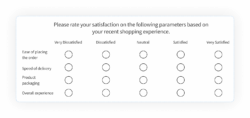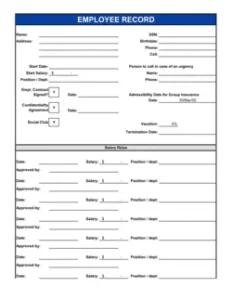Gathering feedback is an essential part of understanding anything, whether you’re trying to gauge customer satisfaction, employee engagement, or the effectiveness of a new product. But how do you capture opinions in a structured, easy-to-analyze way? That’s where surveys come in, and one of the most popular and effective tools within a survey is the 5-point scale. It offers a balanced approach, allowing respondents to express a range of sentiments from strong disagreement to strong agreement, or poor to excellent.
This particular scale format strikes a perfect balance. It’s detailed enough to provide meaningful insights without overwhelming respondents with too many options. The clarity it provides in data collection makes it a go-to choice for researchers and businesses alike, ensuring you get actionable information that can drive improvements and informed decisions. It helps in transforming subjective opinions into quantifiable data.
Understanding the Power of a 5 Point Scale
A 5-point scale, often referred to as a Likert scale when measuring attitudes or opinions, is a psychometric response scale that offers five distinct options. Typically, these options range from one extreme to another, with a neutral midpoint. For instance, you might see "Strongly Disagree," "Disagree," "Neutral," "Agree," and "Strongly Agree." This structure is incredibly versatile, adaptable to almost any question where you’re looking for a gradient of sentiment. It’s widely favored because it provides enough nuance without becoming overly complex for the respondent, making it quicker and easier to complete surveys.
One of the key advantages of using a 5-point scale is its ability to capture a neutral stance. The middle option allows respondents who genuinely don’t have a strong opinion, or who feel neither positive nor negative, to express that. This avoids forcing a choice and can lead to more accurate data. Furthermore, the simplicity of the scale reduces cognitive load for the respondent, leading to higher completion rates and potentially more thoughtful responses. It’s a sweet spot between a too-simple yes/no question and a overly complex 7 or 10-point scale.
The data gathered from a 5-point scale is also relatively easy to analyze. You can calculate averages, percentages for each response option, and even perform more advanced statistical analysis to identify trends and correlations. This makes it a powerful tool for quantitative research, allowing organizations to track changes over time or compare results across different groups. The consistent format also lends itself well to creating a standardized survey template 5 point scale that can be reused for various projects.
Common Types of 5-Point Scales
While the “Strongly Agree to Strongly Disagree” format is iconic, the 5-point scale is incredibly flexible in its labeling:
- **Agreement Scale:** Strongly Disagree – Disagree – Neutral – Agree – Strongly Agree
- **Satisfaction Scale:** Very Dissatisfied – Dissatisfied – Neutral – Satisfied – Very Satisfied
- **Frequency Scale:** Never – Rarely – Sometimes – Often – Always
- **Importance Scale:** Not at all Important – Slightly Important – Moderately Important – Very Important – Extremely Important
- **Likelihood Scale:** Not at all Likely – Slightly Likely – Moderately Likely – Very Likely – Extremely Likely
Each type serves a specific purpose, allowing you to tailor your survey questions to accurately reflect the kind of feedback you’re seeking.
Crafting Your Effective Survey Template 5 Point Scale
When you’re ready to put together your own survey template 5 point scale, careful consideration of your questions and the associated labels is paramount. The questions should be clear, concise, and unambiguous. Avoid jargon or leading questions that might influence a respondent’s answer. For example, instead of asking "Don’t you agree our product is amazing?", a better question would be "How would you rate your satisfaction with our product?". Each question should focus on a single topic to prevent confusion and ensure accurate responses.
The labels you choose for your 5-point scale are just as important as the questions themselves. They need to be clearly understood and consistently applied across all relevant questions. Ensure that the extremes represent true opposites and that the neutral point is truly neutral. Using terms like "Excellent," "Good," "Fair," "Poor," "Very Poor" for a quality assessment, or "Strongly Agree" down to "Strongly Disagree" for an opinion, helps respondents quickly grasp the meaning of each option. Ambiguous labels can lead to misinterpretation and, consequently, unreliable data.
Consider the flow and presentation of your survey. A well-designed survey template 5 point scale should be easy to navigate and visually appealing. Group similar questions together and ensure the scale is presented consistently for each item. This reduces cognitive effort for the respondent and improves the overall survey experience, which can lead to higher completion rates and more thoughtful answers. Testing your survey with a small group before a full launch can help you catch any confusing phrasing or design issues.
Finally, remember that the goal is to gather actionable insights. Once you’ve collected your data, take the time to analyze it thoroughly. Look for patterns, averages, and any outliers. The beauty of a survey template 5 point scale is that it provides quantitative data that can be easily visualized in charts and graphs, making it simpler to identify key trends and areas for improvement. This structured feedback loop is invaluable for continuous growth and understanding your audience better.
Embracing the simplicity and power of a 5-point scale in your feedback collection efforts can truly transform how you understand opinions and experiences. It offers a straightforward yet nuanced approach to gathering data, providing insights that are both easy to interpret and profoundly impactful. By thoughtfully designing your questions and scales, you’ll empower respondents to share their true sentiments, leading to a richer understanding of their perspectives.
Whether you’re looking to enhance customer satisfaction, boost employee morale, or refine product offerings, a well-crafted survey utilizing this versatile scale will serve as a foundational tool. It’s a direct pathway to informed decisions and continuous improvement, ensuring that the voices of your audience are not just heard, but understood and acted upon.


